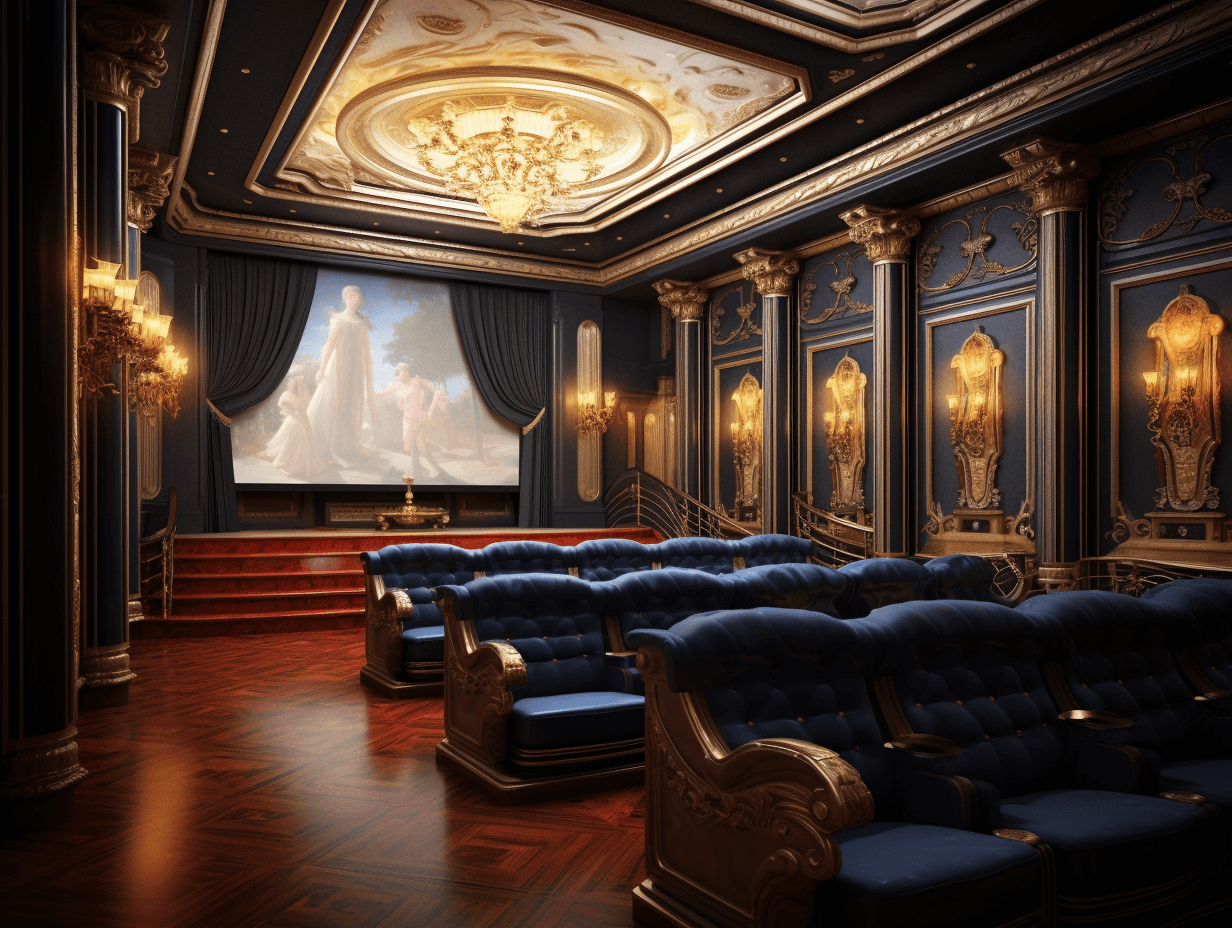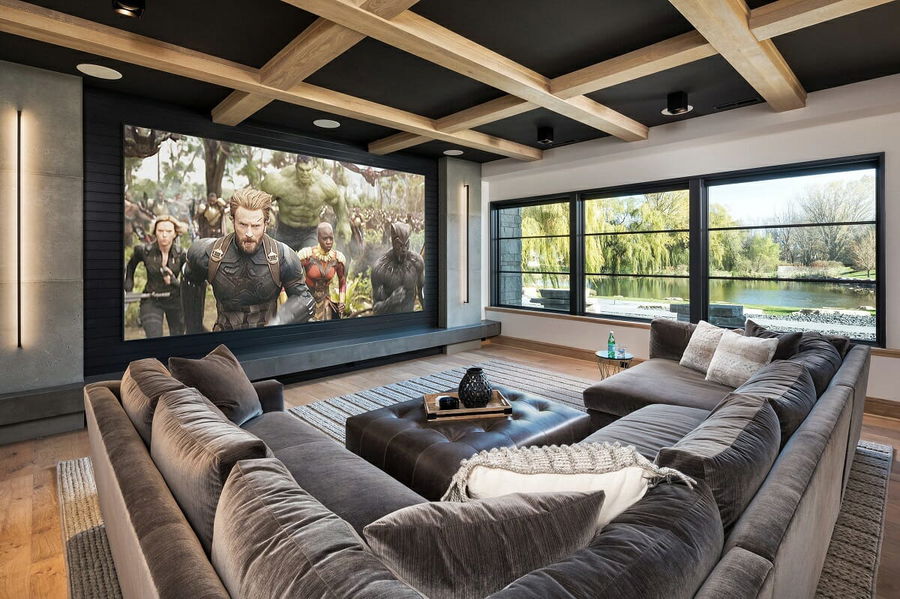Professional Tampa Home Theater Installation for a Seamless Setup
Wiki Article
Home Theater 101: Every Little Thing You Required to Know for a Cinematic Experience in your home
Developing a home cinema that equals the motion picture experience of an industrial theater involves mindful consideration of numerous parts, consisting of screen choice, stereo, and area layout. Each aspect plays a critical duty in attaining the desired ambiance and performance. Whether you are pondering the perfect screen size or the complexities of surround sound, understanding these basics is crucial. As we explore these critical parts, it ends up being noticeable that the choices made can dramatically influence your total viewing experience, leaving one to contemplate just how these decisions will certainly form your individual movie theater.Selecting the Right Screen
When establishing a home cinema, choosing the ideal screen can make or damage the viewing experience - tampa home theater. The screen offers as the centerpiece of your configuration, influencing photo high quality, viewing angles, and general aesthetic. Trick aspects to take into consideration consist of display dimension, resolution, and typeFirst, identify the appropriate display dimension based upon your area dimensions and seating range. A general standard is to rest approximately 1.5 to 2.5 times the angled display size for optimum watching. Next off, choose in between different display types, such as fixed-frame, mechanized, or retractable displays, each offering distinct benefits. Fixed-frame screens normally provide the very best picture high quality, while motorized alternatives permit for adaptability in room usage.
Resolution is one more essential aspect. For a genuinely immersive experience, take into consideration a screen designed for 4K and even 8K web content, making certain intensity and clarity. Furthermore, think about the display's gain, which impacts brightness and comparison; a greater gain can enhance brightness in well-lit rooms, while a lower gain might be extra appropriate for darker atmospheres.
Choosing Sound Equipment
Audio tools is a critical component of any home cinema system, significantly boosting the total viewing experience. The option of audio equipment can identify the depth, clarity, and immersion of noise, essential for creating a motion picture ambience.When picking audio devices, take into consideration a border audio system, which usually includes a receiver, multiple speakers, and a speaker. A 5.1 or 7.1 network system is advised, where the very first number represents the audio speakers and the second the subwoofer, offering an immersive soundscape. The receiver is the heart of the system, managing audio and video clip signals, and ought to sustain modern-day styles like Dolby Atmos for a boosted spatial experience.
Quality audio speakers are vital; look for models that offer a balanced audio account with great bass feedback. Floor-standing speakers can produce richer sound, while bookshelf options conserve room. Additionally, consider wireless choices for ease of installation, although wired systems typically supply remarkable efficiency.

Optimum Seating Arrangements
Developing an ideal home movie theater experience pivots significantly on optimal seating arrangements. The arrangement of seats plays a critical role in both comfort and seeing quality, straight affecting the overall cinematic experience.First, take into consideration the display size and viewing range. A typical guideline is to place seats at a distance about 1.5 to 2.5 times the diagonal dimension of the screen. This ensures an immersive experience without straining the eyes.
Next, elevation is vital. If your seats is in a tiered format, the back rows must be greater than the front to stay clear of blockages. For level seating, make sure that the front row is not too near the screen, which everyone has a clear line of view.
Additionally, think about the arrangement in regards to social characteristics. Team seating can boost the communal experience, while individual seats may be liked for personal viewing.

Lastly, focus on convenience with ergonomic seating that sustains extensive watching periods. Integrating reclining chairs or supported seats can substantially enhance the experience, making the home movie theater a recommended destination for both enjoyment and leisure.
Lighting and Setting
Efficient illumination and ambiance are vital parts of a well-designed home theater, as they considerably affect the viewing experience. The appropriate lighting can enhance the motion picture feel, while bad selections can diminish it. For optimal results, take into consideration a layered lighting method that consists of ambient, task, and accent lighting.Ambient lighting offers general illumination, ensuring that the space is not completely dark, which can strain the eyes. Dimmer switches are highly suggested, enabling modifications based upon the web content being seen. Task lights, such as wall surface sconces or flooring lamps, offers practical illumination for activities like reading or navigating the space without interrupting the general ambience.
Accent lights can be made use of to highlight building functions or create focal factors, including deepness and passion to the space. LED strip lights behind screens or along racks can supply a refined radiance home theater tampa that improves the visual experience without frustrating the audience.

Wiring and Installation Tips
A tactical wiring configuration is critical for achieving optimum efficiency in your house movie theater system. Appropriate wiring not just guarantees premium audio and video signals but also boosts the overall aesthetic of your space. Begin by mapping out your format, identifying where each element will certainly be positioned, including your screen, speakers, and receiver.When choosing cable televisions, focus on top quality, appropriately assessed wiring to minimize signal loss. HDMI cable televisions must be made use of for video clip connections, while speaker cord need to match the specifications of your speakers and amplifier. Choose in-wall ranked cable televisions to follow safety and security criteria and maintain a tidy appearance.

Verdict
In recap, creating a phenomenal home movie theater experience needs cautious factor to consider of different components, including display selection, audio tools, seating arrangements, lights, and electrical wiring. By prioritizing these variables, a motion picture ambience can be successfully duplicated, allowing for immersive checking out experiences that equal traditional theater setups.Producing a home movie theater that equals the motion picture experience of a commercial theatre involves cautious factor to consider of multiple elements, consisting of display choice, sound systems, and area design.When setting up a home theater, choosing the ideal screen can make or damage the seeing experience. Next, pick in between various screen kinds, such as fixed-frame, motorized, or retracting screens, each offering unique advantages. For a really immersive experience, take into consideration a screen created for 4K or even 8K material, making sure sharpness and clarity.In summary, developing an outstanding home movie theater experience needs careful factor to consider of different aspects, consisting of screen option, audio equipment, seating arrangements, lighting, and electrical wiring.
Report this wiki page